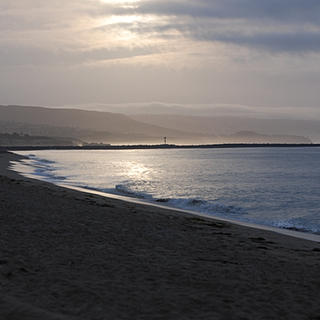California's Rock Reefs
- OC Habitats
- Feb 15, 2021
- 4 min read
The most common depiction of an underwater reef is usually the tropical, warm water, aesthetically beautiful coral reef. However, non-tropical areas with cold water are home to seldomly pictured, ecologically important rock reefs. The rock reefs of California aren’t as glamorous, but they serve as incredibly important structures for aquatic ecosystems. According to the National Oceanic and Atmospheric Administration, rock reefs come in multiple forms: intertidal shore reefs, submerged nearshore reefs, and deep-water reefs. Each form has different respective biological communities associated with each.


Intertidal shore reefs are rocky outcrops that can be completely submerged during high tide and exposed with pockets of water during low tide. These are classic tide pools that provide home and refuge for species like periwinkle snails, fingernail limpets, acorn barnacles, buckshot barnacles, gooseneck barnacles, mussels, crabs, aggregating anemones, sea stars, hermit crabs, sea hares, sunburst anemones, and surf grass.
The submerged nearshore reefs describe underwater rock reefs that still have enough light for aquatic plant photosynthesis to occur. Many species like the Garibaldi fish, California Spiny lobster, black rockfish, red abalone, sunflower star, and sea urchins inhabit this submerged type of habitat.
Lastly, deep-water reefs are rock reefs that do not receive enough light for photosynthesis. Various species of immobile invertebrates, slow growing deep sea corals like the strawberry anemone and barrel sponge, as well as fish like the yellowtail rockfish usually dwell within the deep-water reefs.
California’s rocky reefs are critical ecosystems, structure, and nurseries for our coastal waters. Regardless of classification, all rock reefs serve essential biological importance for aquatic life. Rock reefs provide a solid, immovable, and permanent base structure for marine animals and plants to attach and grow on, encouraging a diverse kelp forest ecosystem. Without rock reefs, California’s keystone habitats of tide pools and kelp forests wouldn’t exist.

Hundreds of marine species of plants and animals would no longer thrive without the availability of California’s rock reefs. The rock reefs also provide shelter and hiding spots for marine life to hide from predators. This allows young aquatic species to live and grow safely until they are ready to leave into the open ocean.
The most common threats to rock reefs are often anthropogenic activities and sources. The intertidal shore reefs are threatened by curious beachgoers displacing rocks, polluting waters with trash and chemicals, as well as disturbing marine life within the tide pools. The submerged nearshore reefs and deep-water reefs are threatened by boat anchors, lost fishing gear such as ghost hooks and nets, and pollution. All these human impacts can physically or chemically degrade the structure of the reefs and lead to eventual loss of habitat and marine life.

In efforts to make additional strides towards conserving California’s rock reefs, the creation of artificial rock reefs has become popularized around the coast to encourage more marine habitat. Based on the reports of the California Department of Fish and Wildlife, artificial rock reefs have been implemented in California’s coast since 1958 and have served as new available habitat for thousands of marine plants and animals since. Artificial rock reefs are usually composed of – you guessed it – rocks. These rocks are typically chunks larger than basketballs and are intended to act as a place for kelp to anchor their holdfasts. From Atascadero all the way to International Beach between San Diego and Mexico, Southern California’s coastline is riddled with giant artificial rock reefs, some stretching hundreds of acres containing tens of thousands of tons of rocks. Within just Orange County, you can find artificial reefs at Bolsa Chica, Newport, and four along Huntington. An artificial reef created off the coast of San Clemente was made as a mitigation project from the San Onofre Nuclear Generating Station. This 174-acre reef was made with hopes of restoring the offshore kelp beds and providing a place for marine animals and plants to thrive. In March 2019, a 210-acre extension of this artificial reef was approved by the California Coastal Commission due to the success of the kelp forest rebound as well as the opportunity to create further marine animal habitat.

These rock reefs are essential for thousands of marine species and deserve recognition and protection. It is important that we protect our rock reefs through safe and mindful boating, fishing, and exploration practices.While the California Coastal Commission and California Department of Fish and Wildlife work to create additional artificial rock reefs for the future, there are ways that the general public can help. You can aid in the creation of these reefs, as well as the preservation and conservation of natural rock reefs, through programs like the Fish Reef Project or Reef Check Worldwide, which accept donations online to support aquatic fish and wildlife in addition to surveying these underwater habitats. If time is what you have to offer, you can volunteer at a variety of organizations such as OC Habitats, OC Coastkeepers, Surfrider Foundation, and Laguna Ocean Foundation in their efforts to protect marine habitats along the Orange County Coast.







Comments